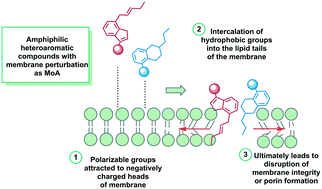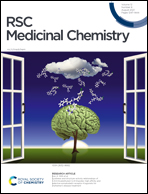Using membrane perturbing small molecules to target chronic persistent infections†
Abstract
After antibiotic treatment, a subpopulation of bacteria often remains and can lead to recalcitrant infections. This subpopulation, referred to as persisters, evades antibiotic treatment through numerous mechanisms such as decreased uptake of small molecules and slowed growth. Membrane perturbing small molecules have been shown to eradicate persisters as well as render these populations susceptible to antibiotic treatment. Chemotype similarities have emerged suggesting amphiphilic heteroaromatic compounds possess ideal properties to increase membrane fluidity and such molecules warrant further investigation as effective agents or potentiators against persister cells.



 Please wait while we load your content...
Please wait while we load your content...